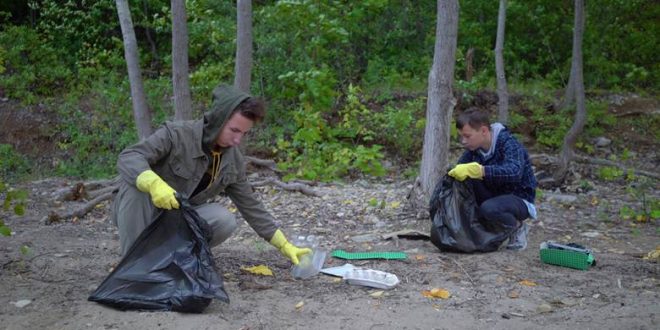In today’s world, the impact of our actions on the environment has become more apparent than ever. As global warming and environmental degradation continue to pose challenges, individuals are increasingly urged to adopt more sustainable lifestyles. This article explores practical steps you can take to reduce your carbon footprint, address waste, and contribute positively to our planet’s health.
Reducing Waste in Daily Living
Tackling the amount of waste we produce is a crucial step towards reducing our carbon footprint. According to Environment America, an individual in the United States discards approximately 5 pounds of waste each day. By adopting habits such as recycling, composting, and choosing reusable products, we can significantly decrease the waste we send to landfills, thereby reducing our environmental impact.
One effective method to cut down on waste is by minimizing single-use products in our daily routines. For instance, switching from disposable plastic bags to cloth tote bags can make a considerable difference over time. Moreover, opting for bulk packaging over individually wrapped items helps reduce packaging waste, leading to a smaller carbon footprint.
Composting organic waste not only reduces the amount of garbage in landfills but also returns valuable nutrients to the soil. Individuals who compost are participating in a natural process that not only supports garden health but also helps decrease methane emissions from landfills. Embracing composting as part of our lifestyle can contribute significantly to waste reduction efforts.
Managing Household Hazardous Waste
Many households accumulate small quantities of hazardous waste, such as batteries and pesticides, which can have long-term environmental impacts. According to information from HWH Environmental, each household generates around 30 pounds of hazardous waste annually. Managing these materials responsibly can prevent them from leaching into the ground and waterways, thereby protecting ecosystems and human health.
When dealing with household hazardous waste, proper disposal methods are crucial. Special collection events or facilities often accept items like batteries, chemicals, and electronics for safe management. By utilizing these services, individuals can ensure that hazardous materials are handled in a way that minimizes environmental harm.
Another sustainable practice is to seek out eco-friendly alternatives to hazardous products. Choosing natural pesticides or rechargeable batteries can substantially decrease the amount of toxic waste generated. Small changes in purchasing habits can lead to a more sustainable lifestyle while simultaneously curbing the generation of hazardous waste.
Ridesharing and Sustainable Transportation Choices
Transportation is a significant contributor to our carbon footprint, but there are ways to mitigate its impact. The Ohio Department of Health reports that over 30% of adults in Ohio use rideshare services at least monthly. Utilizing options like shared rides or public transportation can reduce the number of cars on the road and, consequently, emissions.
Carpooling and rideshare services help decrease the overall demand for individual car usage. By sharing rides with others, the cumulative emissions per person are reduced, making this a more sustainable commuting choice. Additionally, using public transportation such as buses or trains further lowers an individual’s transportation-related carbon emissions.
For those who prefer cycling or walking as part of their commute, these alternatives not only lower carbon emissions but also promote a healthier lifestyle. Incorporating these modes of transport into daily routines can reduce one’s carbon footprint while offering physical health benefits. The shift towards sustainable transportation methods is a positive change for both the environment and personal well-being.
Each of us holds the power to make choices that positively impact the environment. By focusing on waste reduction, responsible handling of hazardous materials, and sustainable transportation options, we can collectively make significant strides in reducing our carbon footprints. As we integrate these practices into our daily lives, we contribute toward a healthier planet and pave the way for future generations.
Embracing sustainability does not require radical change but rather a commitment to consistent, mindful practices. As we adopt these strategies, we help create a world where economic growth and environmental stewardship can coexist. The transition to a more sustainable lifestyle is both necessary and achievable, and it starts with simple steps we can all take today.
The sustainability journey is an ongoing one, involving continual learning and adaptation. By staying informed and motivated, we can inspire others to join us in these efforts. Together, we can make a significant impact and work towards a sustainable, healthy future for our planet.
 Blogging Heros
Blogging Heros




